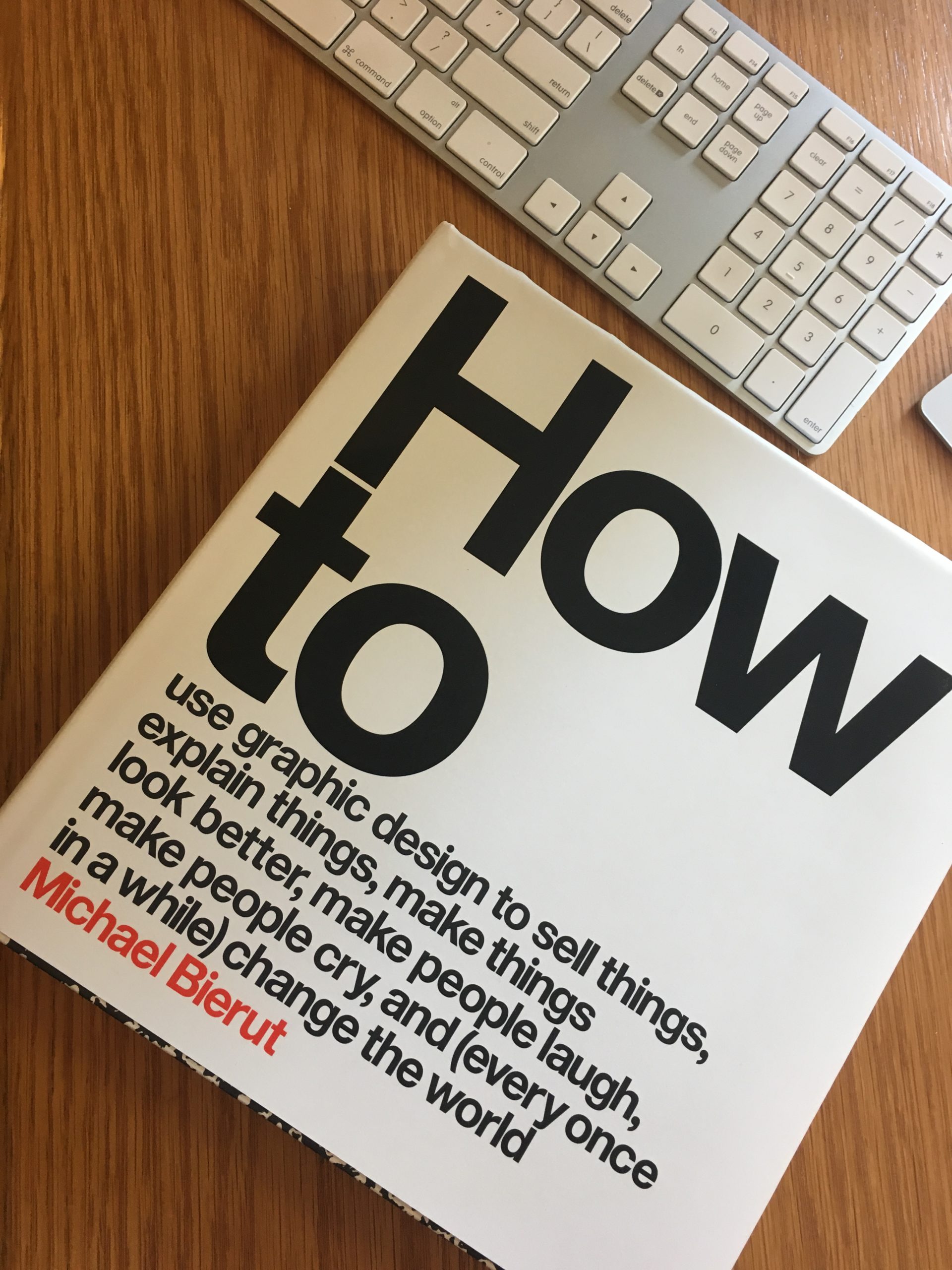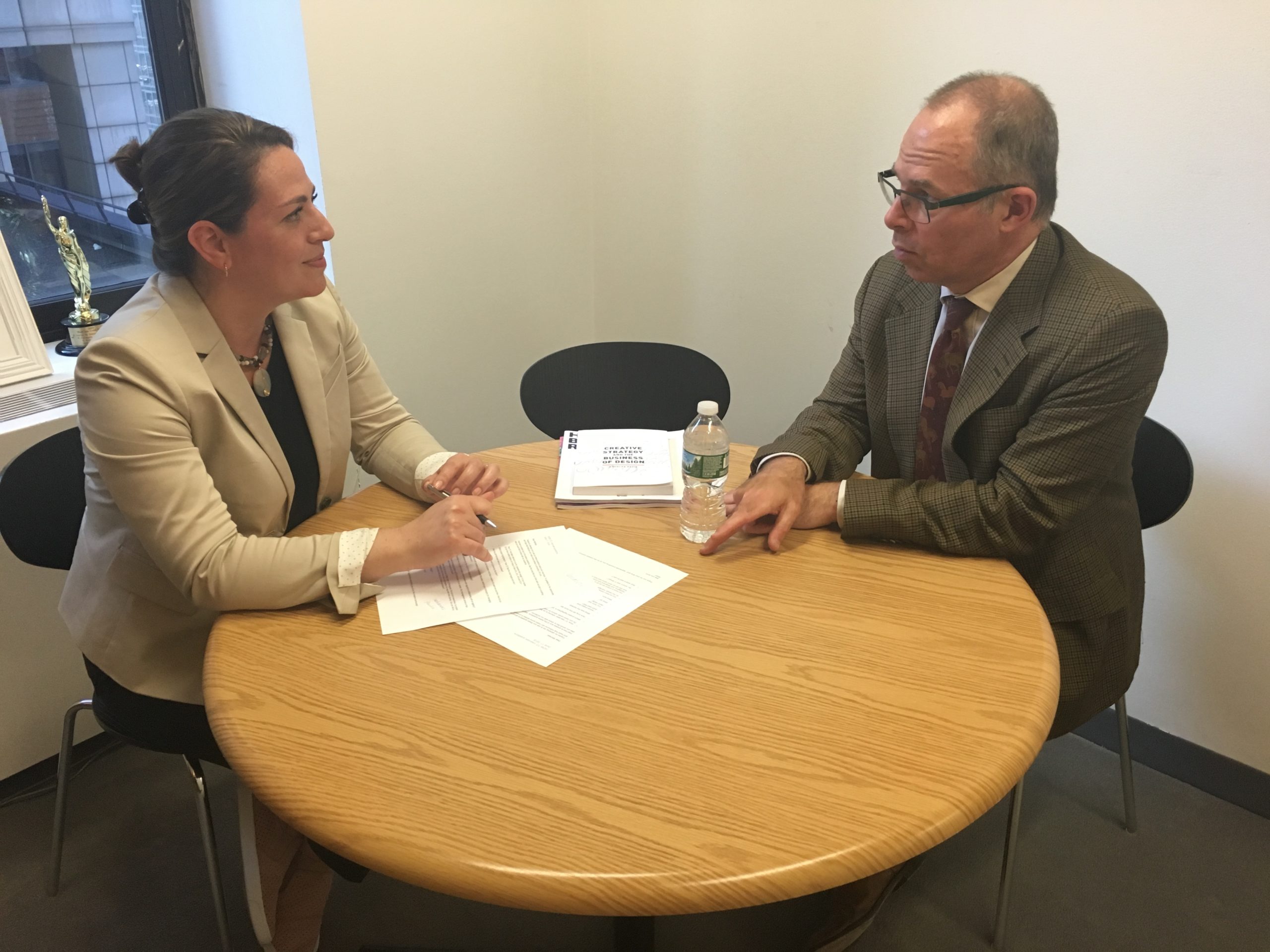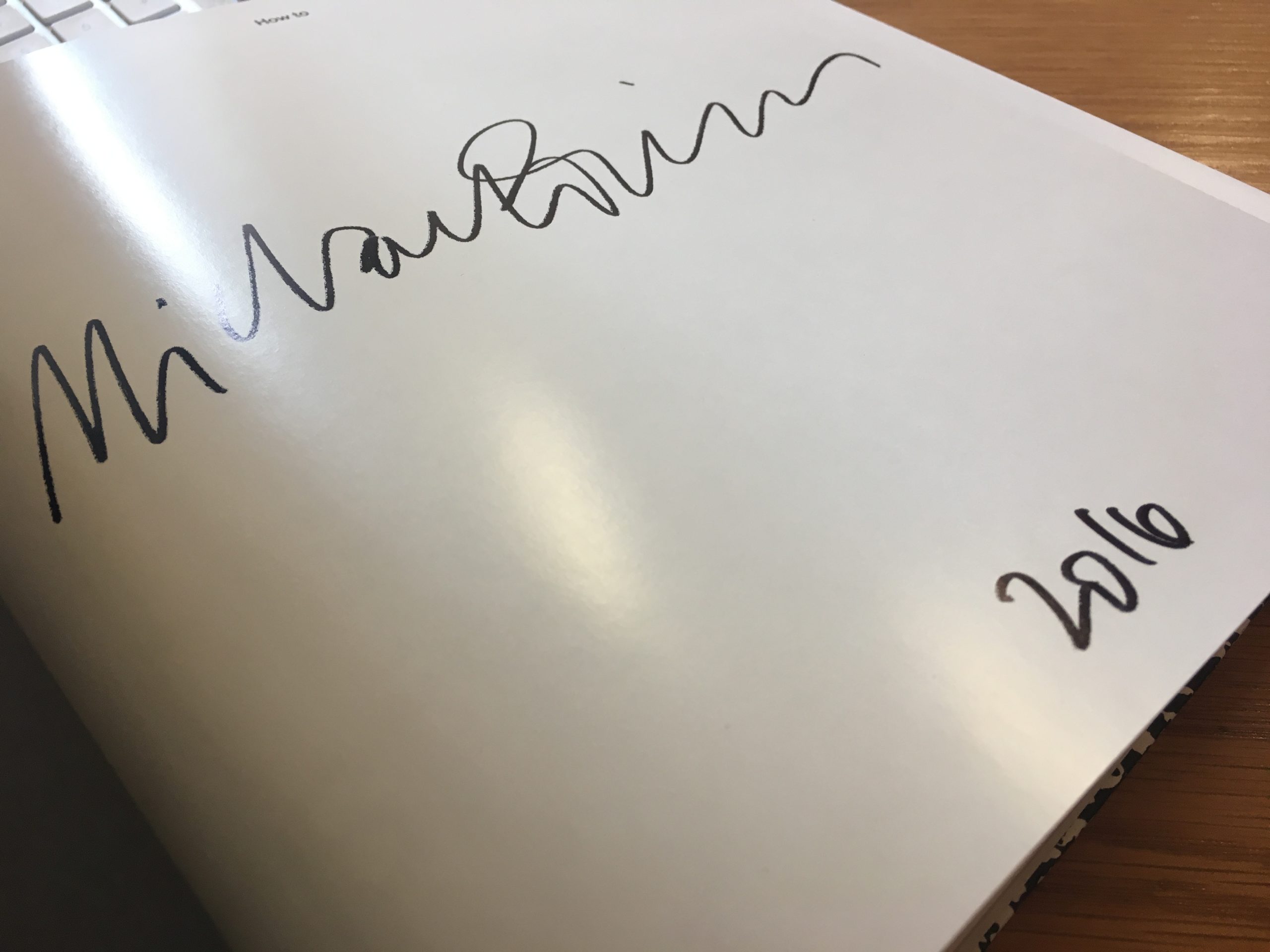Check out part two of our exclusive interview with Michael Beirut and learn what frustrates him most in the design industry.
Robin: “One of the things that made me smile at the very end of the book was the statement: ‘And Paula Scher is the person that I’m endlessly trying to impress.’ You guys sound like brother and sister.”
Michael: “A little bit, yeah. We started at Pentagram at the same time although we are very different people and had very different backgrounds. She had worked in Corporate America at CBS Records and Atlantic Records for the first part of her career but at that point had been running an independent office for 7 or 8 years, and she did work that I thought was famous. As a music enthusiast I knew her album covers already. She has a poster she did for Elvis Costello that was described in detail in the book “Less than Zero” by Bret Easton Ellis, and I was thinking, WOW!
She’s extremely honest to the point of being blunt. If you show her something just fishing for a compliment, chances are she’ll maybe compliment you but also probably tell you how to improve it. On the other hand, I’m always afraid to offend people. I never want to make them feel bad so even constructive advice, which is something that I give so delicately that sometimes people can’t tell that I actually think something is horrible and you need to fix that now, please! I’m getting better as I’m getting older, but she was always blunt that way. And so I would show her things and ask her questions, and she could just give me really fast answers. I had nothing but questions because when I joined Pentagram I’d never run my own business before. I’d really been in this protective environment working for Massimo where he was the one whose charisma basically sold the work. I was implementing things according to his vision. I felt really inexperienced from the first day I joined Pentagram. I looked up to Paula as a slightly older sister who sort of knew all kinds of stuff; it was as if she was kind of like a year ahead of me at school and knew all the teachers, knew what would happen if you got in trouble, knew how to get ahead and just had all of this advice. So I think we ended up having a close working relationship, which has been going on now for 26 years.”
Robin: “What frustrates you the most in the design industry?”
Michael: “I remember when I was in my 30s and started being in a room with people talking business. It’s just so easy to get infatuated with what designers think after they graduate from school; their heads are full, not only of creative ideas but also with design jargon, a language that only other designers and design teachers and design students use. Then you discover that regular people don’t talk that way; you’ll be describing the merit of something to someone and they won’t understand what you’re talking about because you’re not using any words that they understand.
So then people say, “Oh shoot! No one cares about design jargon,” they switch into business jargon, and my business jargon is awful. I’ll take design jargon any day but you hear people doing presentations that are empty and monotone; they say silly things that take the juice out of what’s exciting and interesting and magical about design as a desperate attempt to make it understandable and palpable to what they think is business people.
They try to reduce it down to this long string of platitudes and clichés—whatever the platitudes and clichés of the moment are, whatever the last thing you’ve heard at the last conference you attended or the last all hands meeting you went to, the last memo you got or whatever. If you’re lucky you sort of realize no, people actually do find design exciting. You can’t use it as a way to make people feel stupid but a magic trick doesn’t make people feel stupid. They don’t understand how it works but they are pleased it gives them the moment of delight.
I don’t think what we do is magical all the time. But if you do a magic trick for someone and they don’t seem to appreciate it, I suspect you’re not doing the trick exactly right. Or you haven’t set it up the right way. You’re missing it somehow but the solution isn’t to show people how the trick is done or to make them learn how to do the trick. The solution is to figure out how you can manage to give them the sense of how the trick is supposedly engineered. I think you need to acknowledge people’s eagerness to believe in magic, right? And just because you sort of know what happens behind the curtain, what the actual tricks are to produce the effect doesn’t make it any less potentially magical for people.”
Check back next week for the final part of our three-part interview








